Last week, my 20-year-old daughter was working in a designer store in Brooklyn. I received a text that someone had robbed the store. Of course, my immediate concern was for her safety. She and her coworkers were fine as it happened just to be shoplifting, but crime, nonetheless. Her response to this experience is to be more alert when the door opens, memorizing each visitor.
Like many retailers, her employer lacks the resources to be more vigilant. It’s hard to escape the violence permeating our cities and this country —particularly the associated gun violence. We should consider selling and shopping, not survival and retail crime.
I shared this with the editorial team at Digital Commerce 360, and we felt this was a topic worth exploring. I harkened back to my days at Neiman Marcus and Marshall Field’s while an editor shared stories of his son’s experience as he is working in loss prevention at Ralph Lauren on Michigan Avenue.
Over the past year, all the following sentiments have crossed my mind:
- That neighborhood is no longer a place I want to shop.
- As violence is so random, I’ll just go shopping at the stores I like, and it is business as usual for me.
- I want to support my local stores so they are around in a year or two, and my neighborhood is as safe as any, so I will just head there.
- I will avoid stores that sell luxury goods, as they have fallen prey to the smash and grab.
- Where is my daughter shopping, and is she safe?
Retail crime does not appear to be a shopping deterrent, but some of its byproducts may be formidable. Those are the sentiments of shoppers I reached out to who live and shop everywhere from urban to suburban stores. Rather than identifying individuals, the thoughts expressed seemed to be consistent among those who shared their opinions. Two comments stood out for reflection.
“I don’t think higher store robbery rates would cause me to shop less in stores, even if I did know about them happening in the suburbs. Maybe I’m more rational than others, but there’s more of a chance of me getting hurt just walking/driving around than getting hurt or even involved in a robbery. Statistically, it doesn’t seem to be an issue that would cause me to slow shopping even if I were to be in an area with the higher retail crime rates.”
A resident of Chicago’s Gold Coast reflected, “The only crime-related reason that I am doing less in-store shopping is that there are fewer brick-and-mortar stores to shop. Between the pandemic and crime, many merchants in my ‘hood, the Gold Coast and what was once the Miracle Mile (Chicago), have closed their doors. That said, aside from apparel, I have always been an online shopper and, more than crime, supply chain issues have increased my spending via the internet. In an effort to support local merchants, I will typically try to find something in two or three locations. Then, I’ll buy online when not able to locate whatever I am seeking in-store.”
Shoppers push ahead with vigilance
Heightened awareness is the order of the day for the shoppers just as it was for my daughter. One gentleman shared, “Most of the time, situational awareness and acting like I belong there goes a long way for me. I feel pretty safe when I pick my son up at work on Michigan Avenue. I recently had to pick something up at The Home Depot in a sketchy neighborhood, but it was daylight, so I just did it.”
Sometimes it’s not about oneself but family members, as another gentleman said he’s not really concerned about retail crime. “I shop locally and don’t worry about my neighborhood. Of course, there has been a lot of crime in NYC. I worry about my daughter.” He was not alone in this very small sample.
A concerned mom shared this: “My eldest lives in Lakeview (Chicago), and I worry about crime in general around her neighborhood. I’m glad she runs most of her shopping errands during the day (or at least that’s what she tells me, lol!). Just moved my other daughter to Denver and was a little concerned about the two guys who appeared to be homeless and clearly on drugs in the Target that’s less than a five-minute drive from her apartment.”
Zeroing in on needs means less browsing
One thing that hadn’t crossed my mind was shopper focus and limited interest in browsing. One woman talked about a change in her behavior.
“When I go somewhere to buy something, I go directly to the thing I need and then I leave, so crime isn’t really something I’m thinking about,” she said and her sentiments were also shared by others.
Urban settings face an abundance of challenges
Like many cities, Chicago had our premier shopping street, Michigan Avenue. Designer boutiques flourished, including Gucci, Louis Vuitton, Burberry and Chanel. Chicago’s shopping rivaled that in any major city.
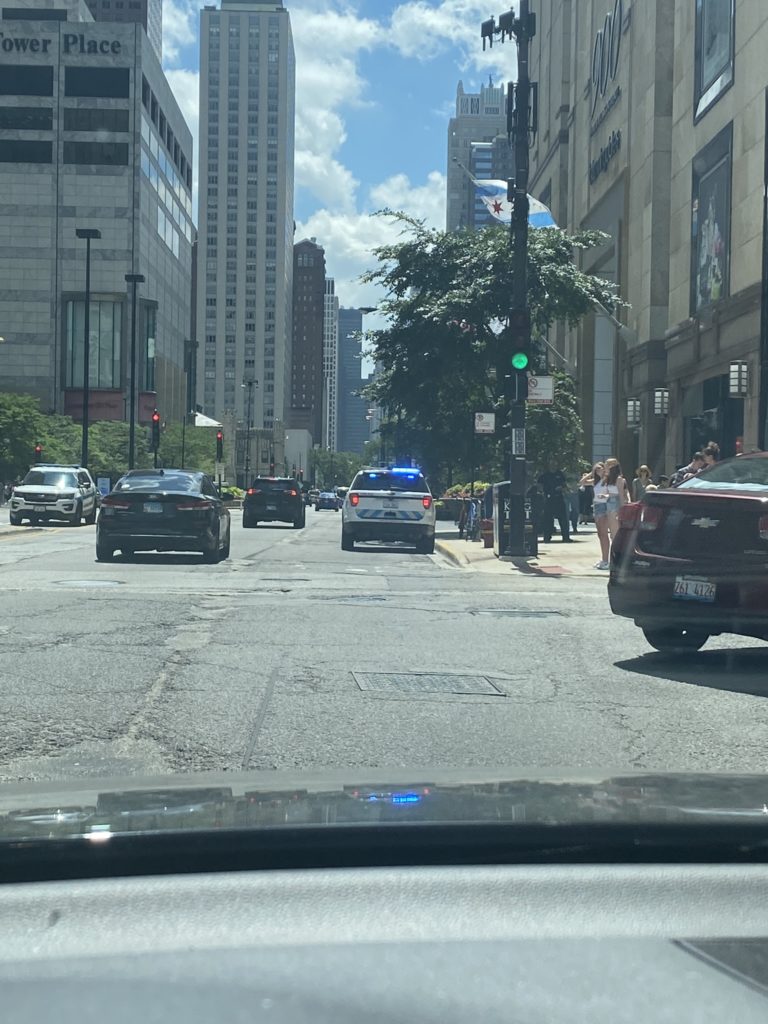
When I drive up Michigan Avenue, now the police are positioned on every street corner and it’s not the retail shopping experience one might hope for. For some it feels safer. For others, it might be a reason to avoid the area. It’s personal.
Don Davis, editor at large, Digital Commerce 360, provided some additional perspective. “There are areas where there has been a spate of high-profile, brazen thefts. Michigan Avenue is one, as are certain areas in southern California and in San Francisco. In those areas, I suspect shoppers do think twice about going to stores for fear of crime. In most of the country, I suspect it’s only a small percentage of consumers whose behavior has changed because of fear of crime, for the simple reason that criminal activity has not actually endangered them or people they know.”
Crowds in years past packed the nearby malls, including Water Tower Place and 900 North Michigan. In January 2019, after some group crime activity, the mall acted. It began requiring teenagers to be accompanied by parents or other adults at 4 p.m. or later Fridays and Saturdays. Signage appears digitally and throughout the mall, which may not be welcoming, particularly for tourists.
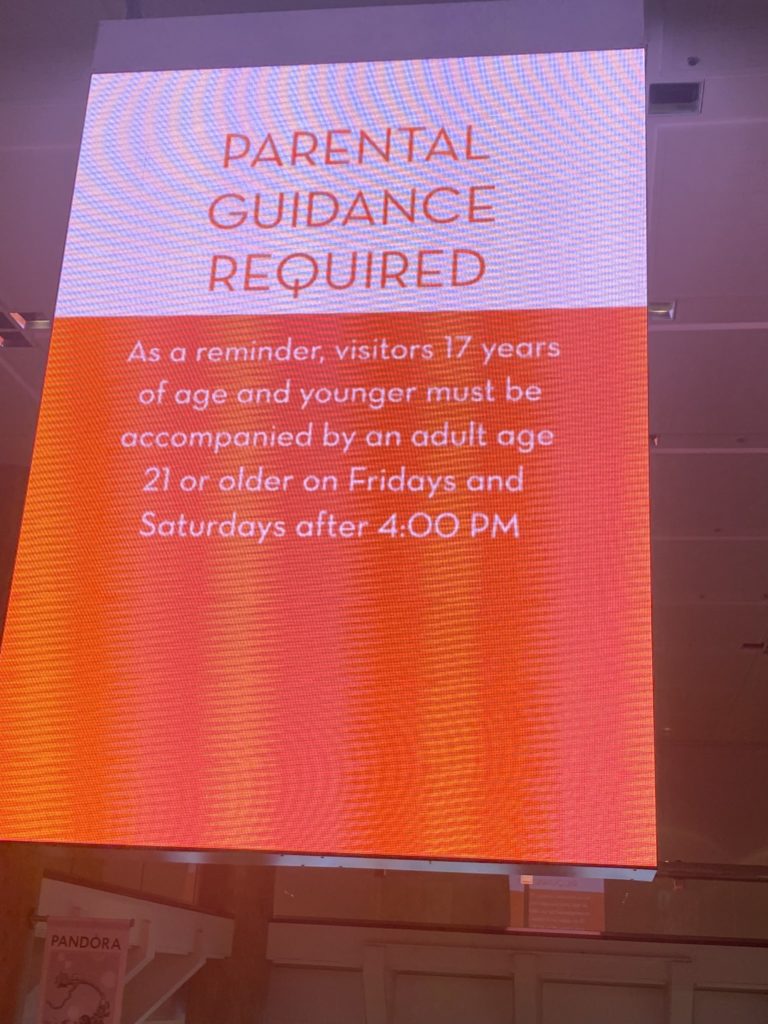
Security guards have a presence in many malls as well as standalone stores. They are now a mainstay of the landscape, eliciting both positive and negative sentiments. Interestingly, one man talked about cameras.
“I do feel a sense of security knowing I am almost entirely on a surveillance camera when I am shopping. Most stores have cameras set up and that eases any anxiety,” the man said.
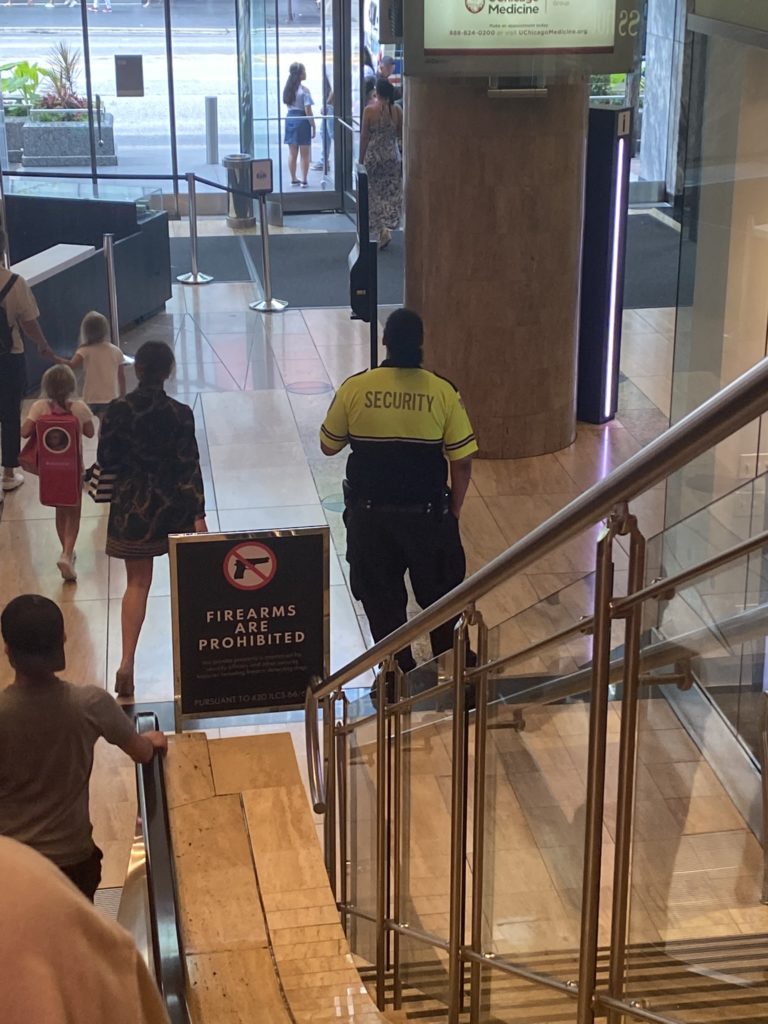
One can see reflected the American Girl store, which like Lego, was busy with families moving in and out. Alongside was signage that suggested visitors report any suspicious behavior, an irony that can’t be lost.
Between COVID and retail crime, many stores simply closed or chose not to renew their leases, as was the case for Macy’s (No. 5 in Digital Commerce 360’s Top 1000 database) in January 2021.
Robberies seem to be a part of this street and nearby Oak Street as they are in many cities. In March of this year, both Gucci and Burberry were targeted.
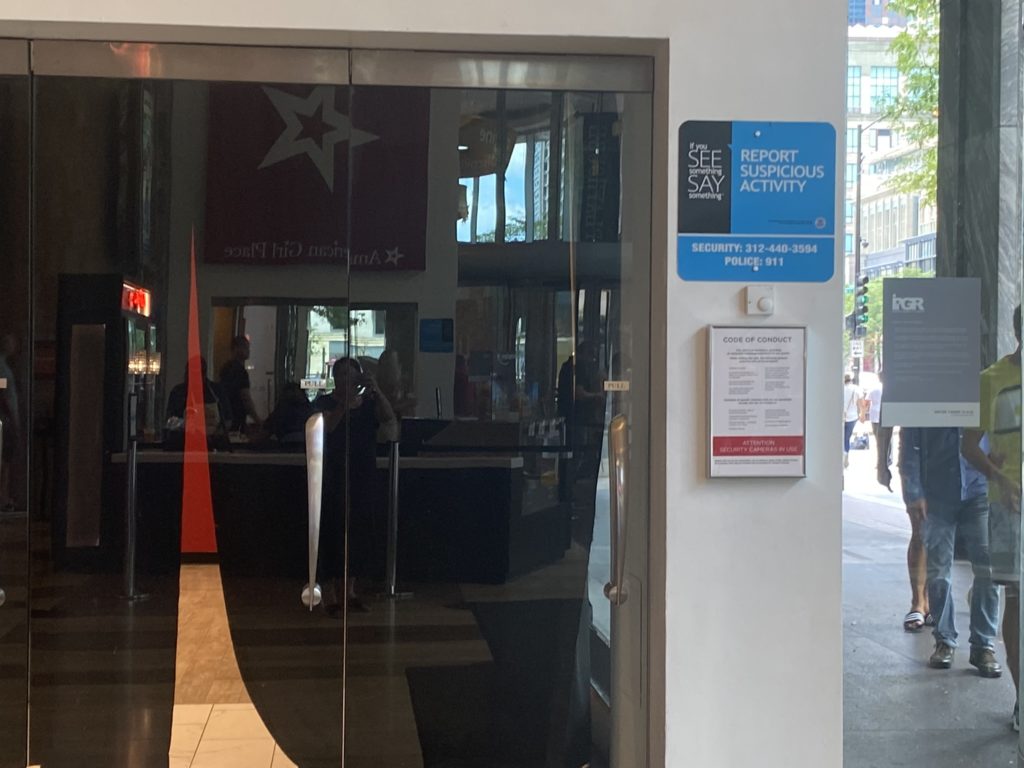
In April 2022, Brookfield Properties gave up on trying to save Water Tower Place, the first indoor mall built in Chicago. It also looks like they have another property up for sale across the street.
And truthfully when I visited on Aug. 1, the mall lacked energy. Even post-Lollapalooza, with many folks still out, the empty storefronts were noticeable, as was the security presence and firearm signage. Between the cost to park and the lack of energy, I see little reason to head to this mall. Ironically, it just might be to make an internet return as I run in from a free 15-minute parking space nearby.
Suburban malls and crime
Despite some smash-and-grab thefts at several Chicagoland malls in the past month, it doesn’t seem to have taken a toll.
However, there is a sentiment among some surveyed whose train of thought goes as follows.
“I’ve never been a fan of indoor malls like Woodfield, and since hearing about the shooting at the factory outlet mall in Rosemont a while back and another shooting in a food court somewhere else, it does make me like shopping in malls even less,” expressed one suburban shopper.
Shoppers scale back browse time
One issue coworkers suggested has important implications for all shopping: Shoppers appear to be more focused, taking little time on their shopping trips to simply browse.
“I really do not go to large indoor malls just to browse any longer. I pretty much go in and get what I need, and I am out,” noted a suburban woman.
This means the likelihood of impulse buying and discovery is limited, suggesting dollars being spent is less.
The neighborhoods
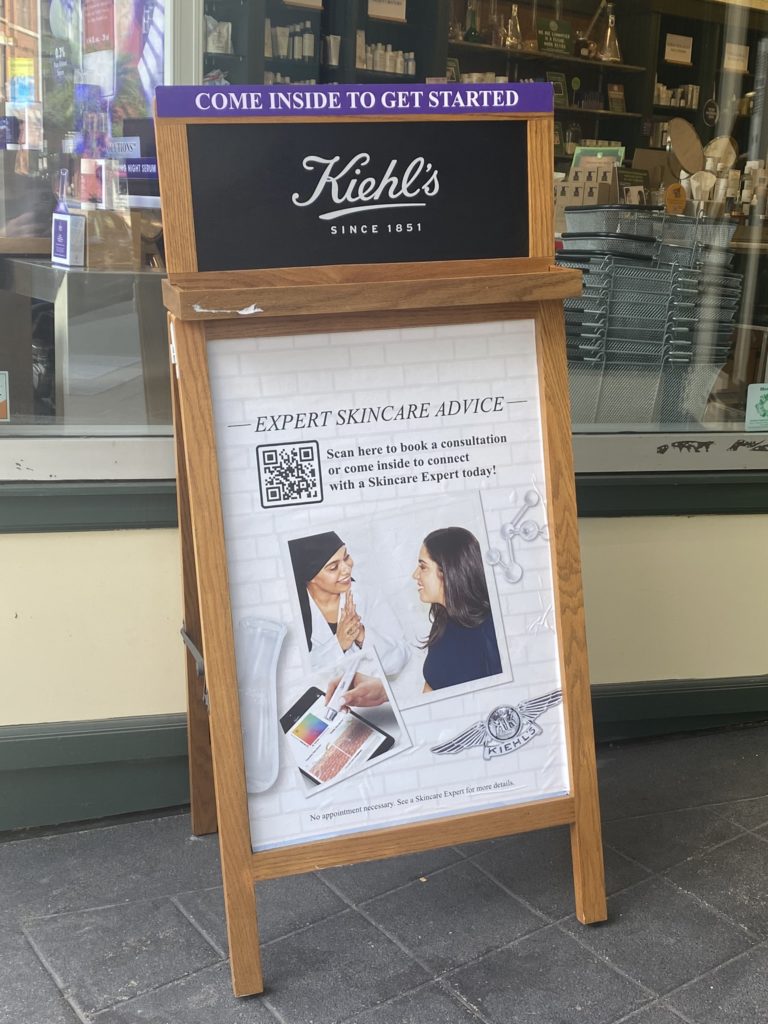
Local neighborhoods have great appeal to me. I can walk to several within 30 minutes and drive to many more in minutes.
It’s pleasurable, the store footprints are small, and they seem to have ample staff. They are mostly larger chains and digitally native brands simply putting up a presence in these high-income neighborhoods. Safety feels like a non-issue.
The merging of online and offline is visible at Kiehl’s, where they encourage you to scan and book appointments or, better yet, come inside for skincare advice.
New occupants are arriving
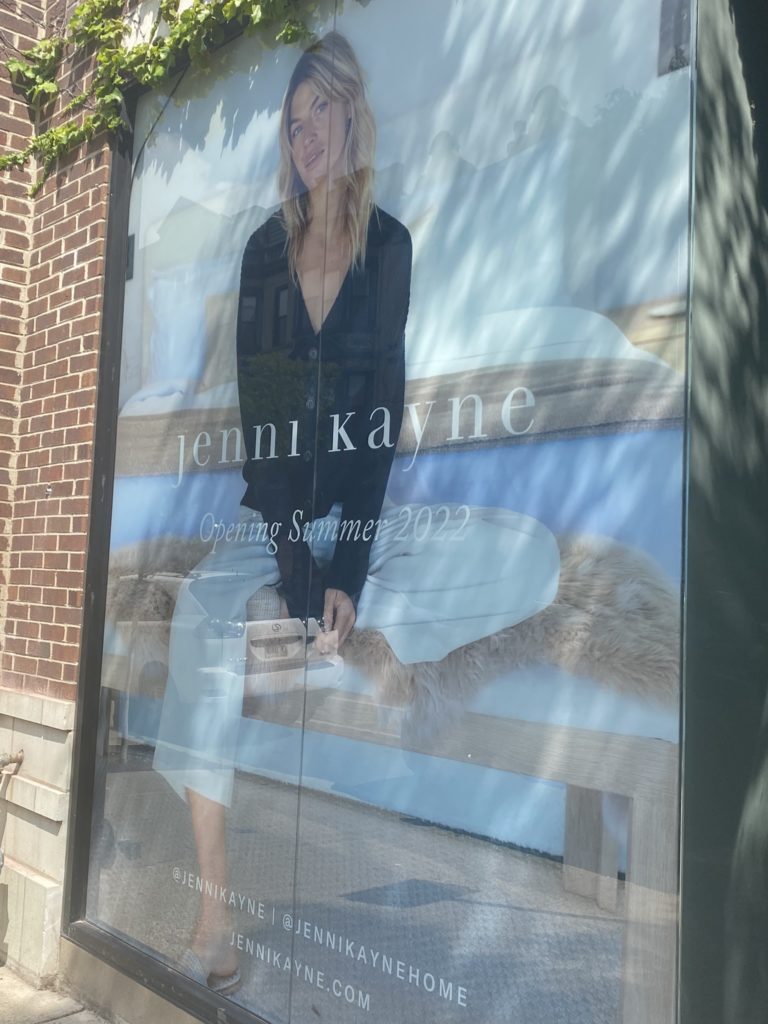
Whether it be specialty stores or digital brands adding a retail channel, there seems to be stores opening. At least, that’s how it appears in these neighborhoods, whereas Michigan Avenue seems much bleaker to me.
Jenni Kayne is just one example of a new tenant looking to do business in this Lincoln Park neighborhood with products perfectly suited for the locale.
In Digital Commerce 360 and Bizrate Insights‘ post-holiday survey of 1,033 online shoppers, choosing to shop with retailers revolved around free shipping (64%) and in-stock products (57%). But it also included appealing promotions (30%) and belonging to loyalty/rewards programs (27%), all of which were part of the experiences I encountered on Armitage, one small neighborhood street in Chicago.
The need to touch and feel from an apparel perspective remains. At State and Liberty across the street, they let shoppers know that feeling the fabric still matters.
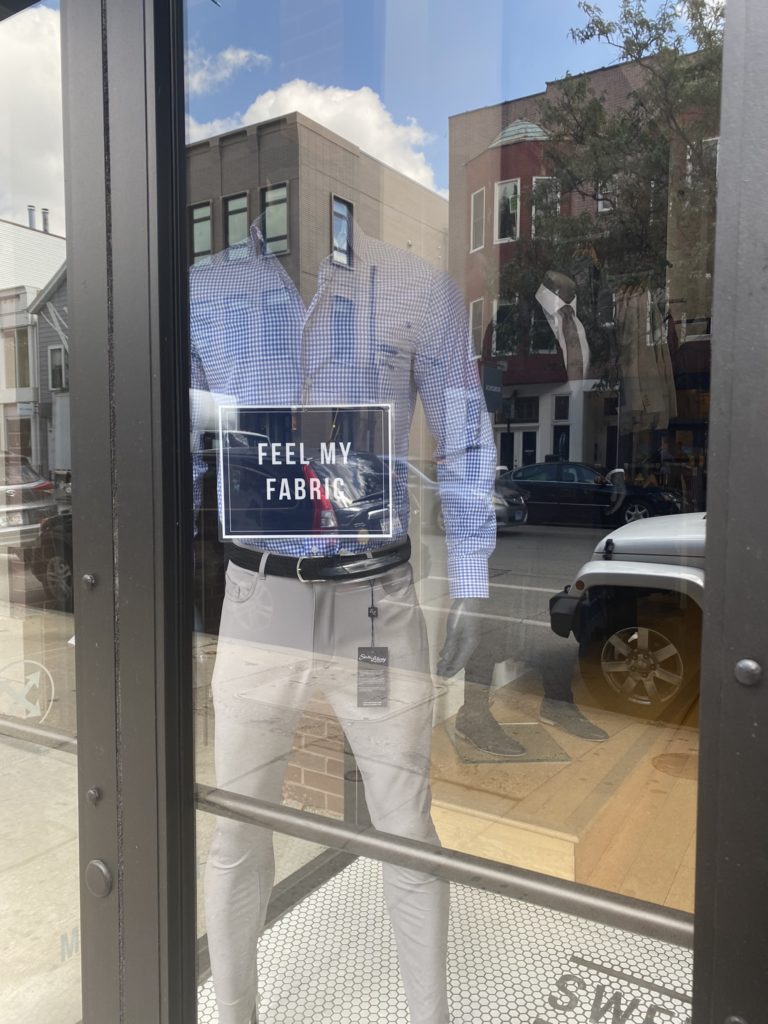
Outdoor Voices rewards their shoppers, and these loyalty perks have been shown to resonate in store selection.
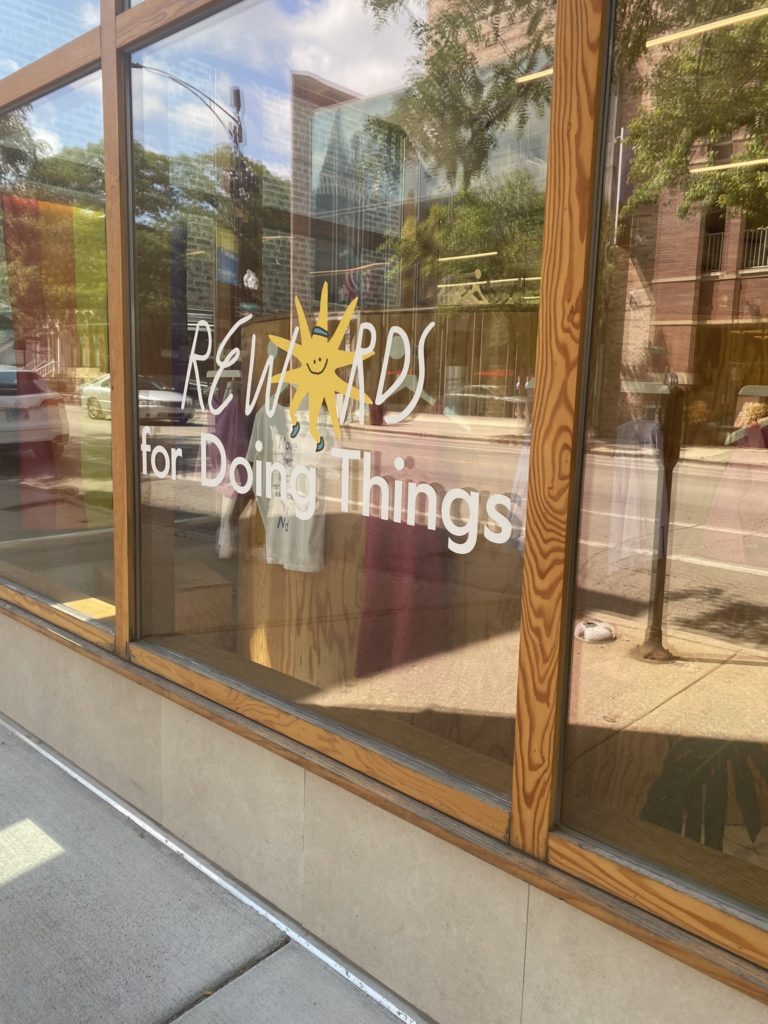
Paper Source courts teachers with a 15% off promotion in the window.
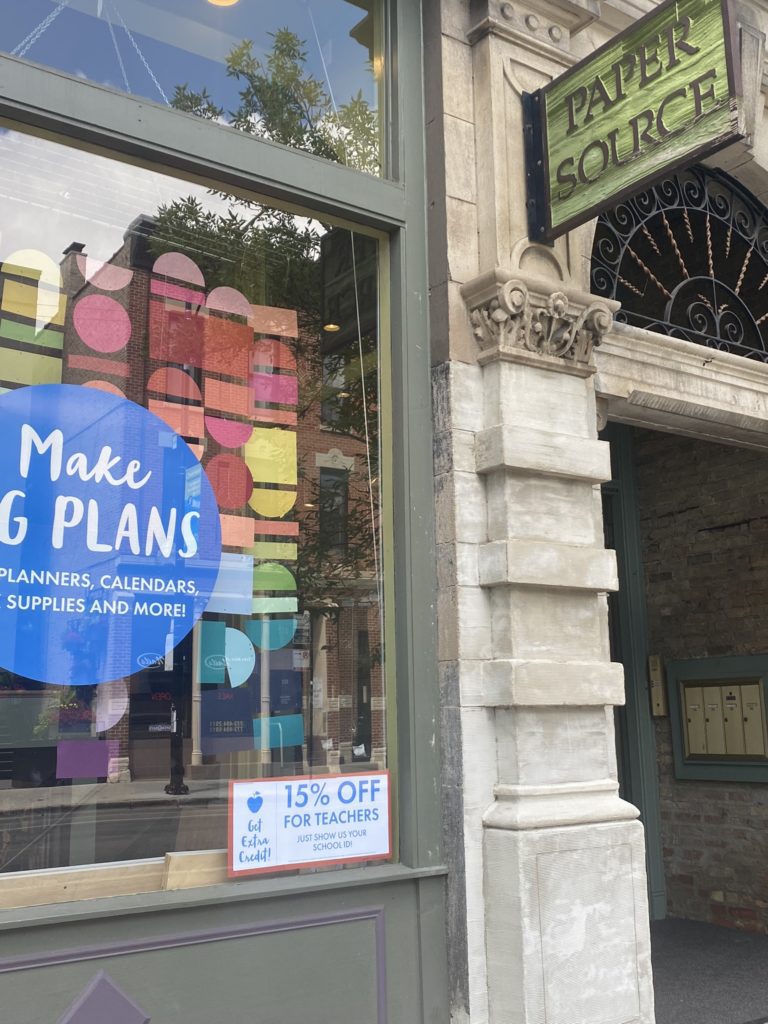
Peruvian Connection lets those passing by know that they have new arrivals.
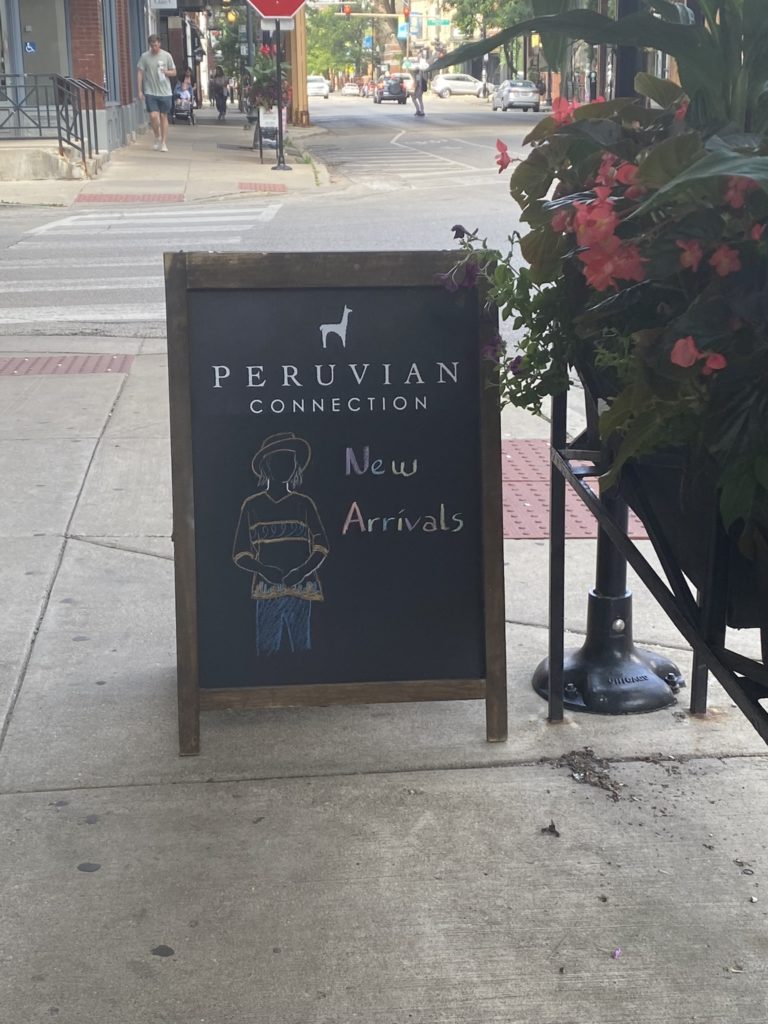
Reflections on retail crime
The thoughts and perspectives that I have shared gave me pause and harkened me back to what one woman and avid shopper suggested.
“I think we always need to be watchful of our surroundings in all public places including malls and shops. I have not had to change any shopping, but most of my shopping is online anyway,” she said.
The online sentiment was voiced by most as a mainstay of their shopping behavior and not one person said their online buying has changed.
I for one want to live in a multi-channel world and that means making it safe for both those who work retail and those shop these stores. We can coexist if we do this right.
Sign up
Stay on top of the latest developments in the ecommerce industry. Sign up for a complimentary subscription to Digital Commerce 360 Retail News.
Follow us on LinkedIn, Twitter and Facebook. Be the first to know when Digital Commerce 360 publishes news content.
Favorite